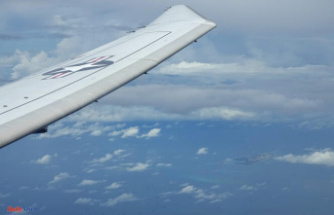The National Weather Service reported that Seattle's June heat record was 99°F (37.22° Celsius) at mid-afternoon on Saturday. Other towns and cities from the east coast of Washington to Portland, Oregon, were also likely to set records. Many areas will see temperatures rise up to 30 degrees above average.
This is a very dangerous forecast in a region that is used to mild weather and where many people don’t have air conditioning.
Berry farmers had to rush to get their crops picked before they went to rot. Fisheries managers also had to work hard to protect endangered sockeye salmon from the heat of the river. Portable air conditioners and fans were sold out in stores, hospitals cancelled outdoor vaccination clinics, cooling centers were opened by cities, baseball teams moved up or cancelled weekend games, and utilities prepared for power outages.
Multnomah County officials in Oregon needed volunteers to staff cooling centers for older residents, homeless people and other individuals who were suffering from the heat. Cascades Street Outreach is an advocacy group for those experiencing homelessness. They were going to the homeless camps to encourage them to use the cooling centres.
Peter Tiso works for Multnomah County’s Joint office of Homeless Services. He told Oregonian/OregonLive.com the Oregon Convention Center can accommodate about 300 people but that no one will be turned down from the cooling shelter. He said that the shelter allows pets.
He stated, "We don’t want anyone making the dangerous decision of whether to leave their pet behind or not."
Seattle was forecast to rise above 100 F (38 C) this weekend. In Portland, forecasters predicted that the temperature could reach 108 F (42) by Sunday. This would break the 1981 record of 107 F (42). For large parts of the region, it was expected that unseasonably hot weather would continue into next week.
According to the National Weather Service, Seattle has only reached 100 F three times in recorded historical records. It could also surpass Monday's record of 103 F (39 C).
NWS Seattle tweeted that "if you're keeping track of the records that will be broken, you might need some pages by the beginning next week." It announced that Seattle had set a record for the morning-lowest temperature on Friday.
James Bryant, a Seattle resident bought an air conditioner to combat the heat. The majority of homes in the Northwest's largest cities don't have air conditioning.
Bryant stated, "My house is already very hot and with the heat of the next few days, my kids are going to get too hot." It seems to be a growing trend... It seems to be a trend, so I don't know what it is. But it's certainly not fun.
Columbia Basin fisheries managers worry about how the heat wave could affect endangered Snake River Sockeye and other protected salmon species.
The Lewiston Tribune reported that federal, state, and tribal officials are working together to reduce rising water temperatures in lower Snake River. They have released 42 F (5.56 C), water from Idaho's Dworshak Reservoir. The water was released earlier in the week by officials hoping to maintain the river's water temperature below 68 F (20 C) Officials are worried about a repeat 2015, when the water temperatures in Columbia river reservoirs were so high that it was deadly for sockeye salmon.
Jason Morrell, a berry farmer in eastern Washington, said that the sun was drying his strawberries quickly, making them susceptible to rotting if not picked up soon. Morrell, who owns Walters' Fruit Ranch in Spokane, said that farmers normally have three weeks to pick their strawberry crop. He expects that the task will be completed in a matter of days, with Spokane reaching 109 F (42.78 C), on Monday.
Boise, Idaho officials advised parents to be cautious around hot playground equipment. Hot playground toys like slides and other toys can cause skin to blister under the summer heat. Boise safety and risk manager Corey Pence explained to the Idaho Statesman that children should not use slides or other playground toys if they are too hot.
Washington Governor Jay Inslee lifted COVID-19 restrictions on publicly-owned or operated cooling centers. The state's current capacity is limited to 50%, until Wednesday when it reopens fully. Governor. Kate Brown, the Governor of Oregon, suspended capacity limits at movie theaters and shopping centers -- places with air conditioning -- in preparation for Wednesday's statewide reopening.
USA Track and Field had to reschedule some weekend events due to the heat in Eugene, Oregon.
On Sunday, around 3,000 people signed up for the Ironman race at Coeur d'Alene in Idaho. It was held when temperatures reached a record 101 F (38 C). The triathlon includes a swim of 2.4 miles (3.9 km), a bike ride of 112 miles (180-km) and a marathon.
Racers gathered near Colorado Springs, Colorado were also facing the same problem. Pikes Peak Summit is expected to receive heavy snowfall Saturday night and Sunday, which could make it difficult for the Pikes Peak International Hill Climb. The second-oldest auto race in America has participants driving a course of over 12 miles and 156 turns. It ends at Pikes Peak, an elevation of 14,000 feet.
Kristie Ebi, an associate professor at the University of Washington, spoke of the possibility of a warmer future. She studies the effects of climate change on weather patterns around the world and the global warming that has impacted public health.
We know from evidence all over the globe that climate change is increasing heat waves' intensity, duration and frequency. She said that we will have to accept this change going forward.
She said that the warm air drys vegetation and soil making it more vulnerable to fire.
Last fall, Oregon was devastated by a wildfire season that was unusually intense. It torched approximately 1 million acres (4685,558 hectares), destroyed more than 4,000 homes, and killed nine people. According to the U.S. Drought Monitor, there are several fires burning in the Pacific Northwest.
Date Of Update: 26 June 2021, 19:25











